In 1888, Wilhelm’s father succeeded as Frederick III. He died shortly afterwards, making Wilhelm Kaiser at the age of 29. Although he had previously admired the great German statesman Otto von Bismarck, within two years Wilhelm had forced his resignation. He was a strong believer in increasing the strength of the German armed forces, particularly the navy. His policies towards Britain were contradictory. He alienated Britain with his naval expansion and a policy of aggressive German colonial expansion, and also supported the Boers in their fight against the British. But he was also closely related to the British royal family and was particularly fond of his grandmother, Queen Victoria.
Following the assassination of Archduke Franz Ferdinand in Sarajevo in 1914, Wilhelm encouraged the Austrians to adopt an uncompromising line against Serbia, effectively writing them a ‘blank check’ for German support in the event of war. He appeared not to realise the chain reaction this would trigger. Russia and her allies France and Britain entered the war against Germany and Austria. Wilhelm tried to scale back the mobilisation of Germany’s armed forces, but was prevented by the Germany military. While theoretically supreme commander, Wilhelm found himself excluded from military decisions, but crippled chances of a compromise peace by encouraging the grandiose war aims of certain generals and politicians.
In 1918, the United States’ full scale entry into the war, combined with severe German shortages of men and materials from years of attrition-based trench warfare, led to Germany’s military collapse. Wilhelm was forced to abdicate and went into exile in the Netherlands. Attempts by the victorious allies to extradite and try him for war crimes came to nothing. With Adolf Hitler’s rise to power after 1933, Wilhelm had hopes of being restored but they came to nothing and he died on 4 June 1941.
The figure wears the parade dress of the Gardes du Corps. The helmet has a special pattern silver-plated eagle with a gilded crown. The special black parade cuirass was introduced in 1897. Thereafter it was worn for New Year’s parades and on others special ceremonial occasions. The emperor holds an Army field-marshal’s baton in his right hand. Even in a period when it is entirely normal for monarchs to wear military uniform, the German emperor’s enthusiasm for the military uniformity was exaggerated.

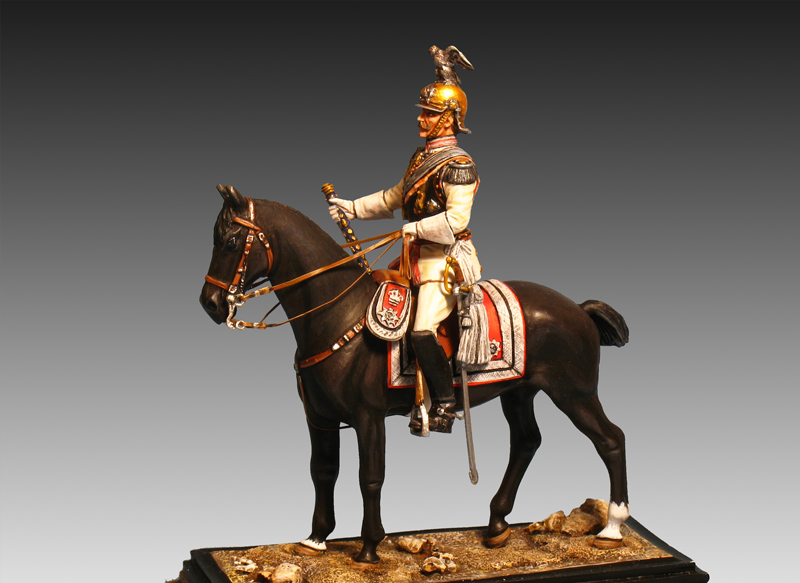
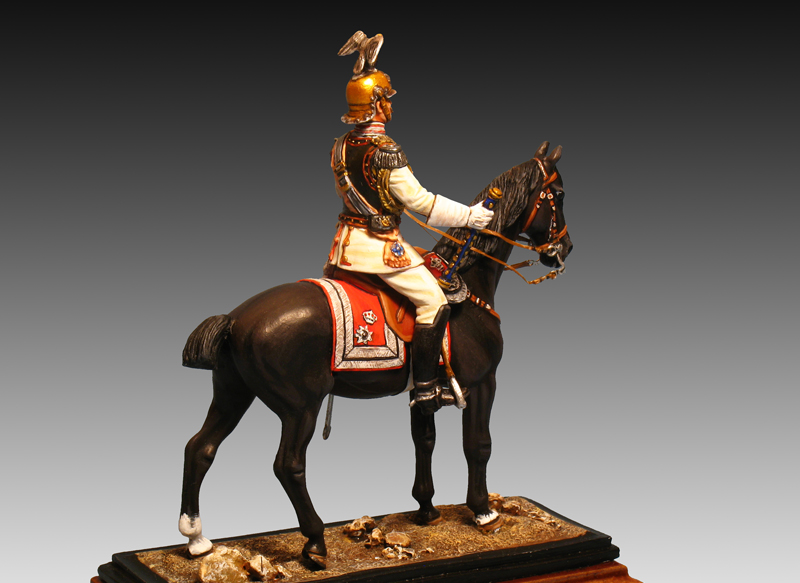


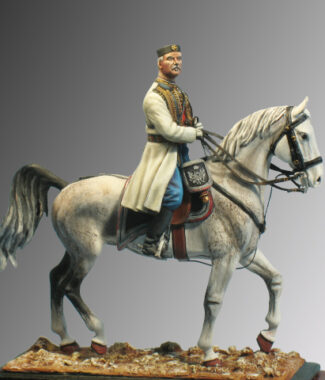
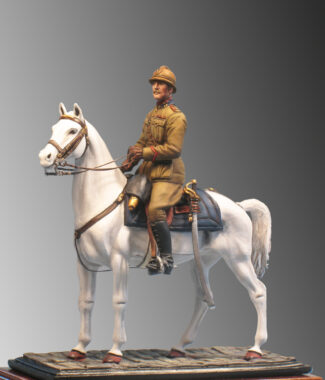
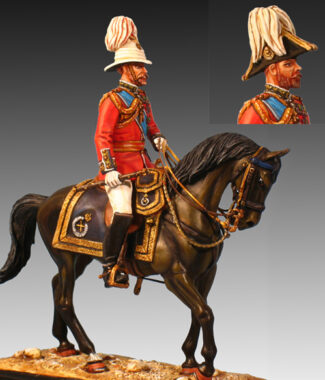
Reviews
There are no reviews yet.